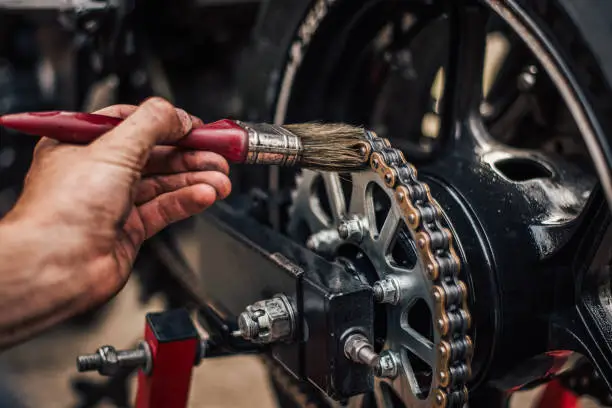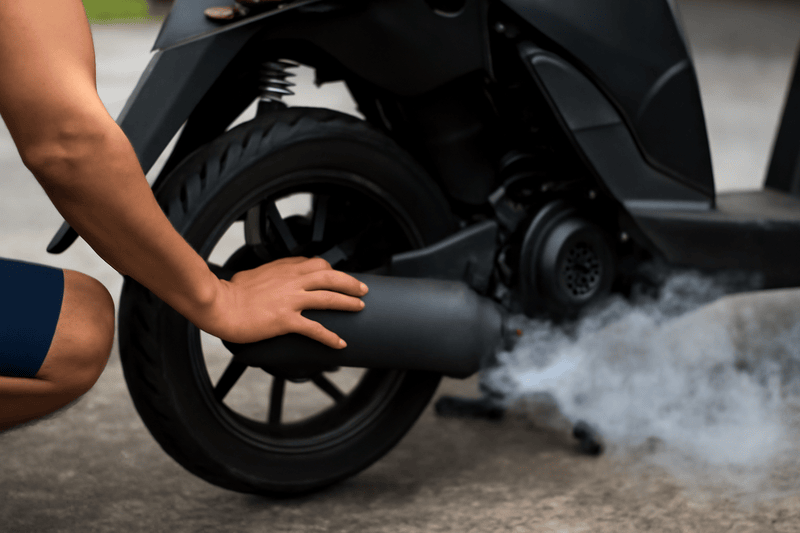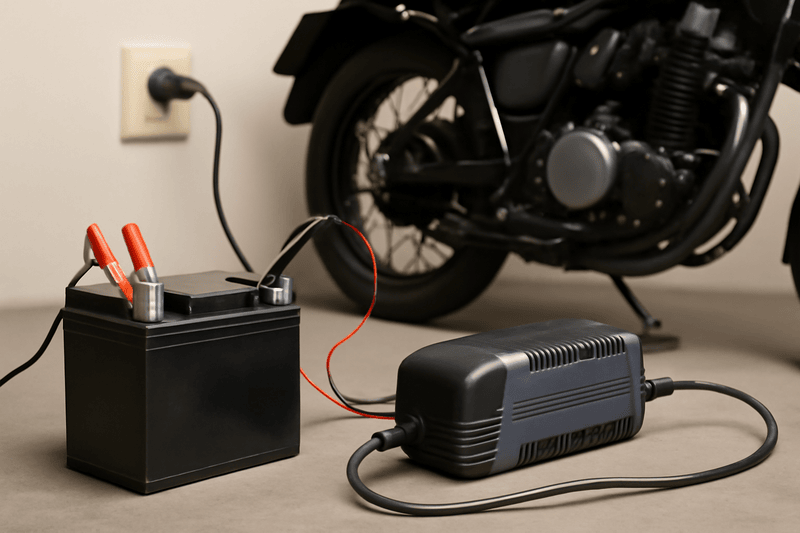As a motorcycle enthusiast, I understand the thrill of getting my hands dirty and fixing my bike myself. It’s not just about saving money; it’s also about the satisfaction of knowing you’ve done it yourself. Over the years, I’ve gathered a toolbox full of essential tools that have made DIY motorcycle repairs a breeze. In this blog post, I’ll share the best tools for DIY motorcycle repairs that every rider should have in their kit.
Table of Contents
Toggle1. Socket Set
A high-quality socket set is indispensable for motorcycle repairs. It comes with various sizes of sockets and a ratchet handle, making it versatile for different bolts and nuts. Look for a setthat includes both standard and metric sizes, as motorcycles often use a mix of both. A good socket set will help you tackle tasks like changing oil, adjusting the chain, and replacing brake pads.
Tip: Choose a socket set with a magnetic tray to keep your sockets organized and within reach.
2. Wrenches
Wrenches are fundamental tools for any bike repair job. Having a set of combination wrenches – which have an open-end on one side and a closed-end on the other – can help you handle various fasteners. I recommend a set with a range of sizes to cover all the bolts on your motorcycle.
Tip: Adjustable wrenches can also be handy for those odd-sized bolts that don’t fit neatly into standard sizes.
3. Screwdrivers
A good set of screwdrivers is crucial for tasks ranging from adjusting your carburetor to removing panel screws. Invest in a set that includes both flathead and Phillips head screwdrivers in various sizes. This will ensure that you’re prepared for any screw type you encounter.
Tip: Consider screwdrivers with ergonomic handles for better grip and comfort during long repairs.
4. Pliers
Pliers are incredibly useful for gripping, twisting, and cutting. Needle-nose pliers are great for reaching tight spots, while regular pliers are useful for holding onto objects and bending wires. A pair of wire cutters will come in handy for snipping cables or wires during maintenance.
Tip: Look for pliers with a built-in wire cutter for added convenience.
5. Torque Wrench
A torque wrench ensures that bolts and nuts are tightened to the manufacturer’s specifications. This is crucial for avoiding over-tightening or under-tightening, which can lead to mechanical issues. For motorcycle repairs, a torque wrench with a range of 10 to 100 Nm (Newton meters) should be sufficient.
Tip: Calibrate your torque wrench regularly to ensure accurate readings.
6. Oil Filter Wrench
Changing the oil filter is a routine maintenance task that can be a bit tricky without the right tool. An oil filter wrench helps you remove and install the filter easily, without damaging it oryour engine. There are various types available, including strap, chain, and clamp wrenches.
Tip: Choose an oil filter wrench that fits comfortably in your hand and is compatible with your motorcycle’s filter size.
7. Tire Changing Tools
Flat tires are one of the most common issues riders face. Having the right tire changing tools can save you from being stranded. A tire iron and a tire lever set are essential for removing and installing tires. Additionally, a portable air pump will help you keep your tires at the correct pressure.
Tip: Practice using these tools before you actually need them to ensure you’re comfortable with the process.
8. Multimeter
A multimeter is a valuable tool for diagnosing electrical issues. It measures voltage, current, and resistance, helping you troubleshoot problems with your bike’s electrical system. Whether you’re checking the battery’s health or testing circuits, a multimeter is a must-have.
Tip: Invest in a digital multimeter for ease of use and accurate readings.
9. Chain Breaker Tool
Maintaining your motorcycle’s chain is crucial for smooth riding. A chain breaker tool allows you to remove and replace links in your chain, ensuring it’s properly adjusted and tensioned. This tool is especially useful if you need to shorten or lengthen the chain.
Tip: Keep your chain breaker tool clean and lubricated for smooth operation.
10. Battery Charger
Keeping your motorcycle’s battery in good condition is essential for reliable performance. A battery charger can help you maintain the charge and extend the life of your battery. Look fora charger with automatic shutoff and overcharge protection to prevent damage.
Tip: Choose a battery charger that is compatible with your bike’s battery type (lead-acid, AGM, or lithium).
Conclusion
Investing in these essential tools will make your DIY motorcycle repairs more efficient and enjoyable. From socket sets to battery chargers, having the right equipment on hand will helpyou tackle various maintenance tasks with confidence. Remember, regular maintenance is key to keeping your bike in top shape and ensuring a safe and smooth ride. Happy repairing!
FAQs
1. What should I look for in a quality socket set?
When choosing a socket set, look for one that includes a wide range of sizes in both standard and metric measurements. The set should also come with a durable ratchet handle and a magnetic or organized tray to keep everything in place. Quality materials and construction will ensure longevity and performance.
2. Are adjustable wrenches suitable for motorcycle repairs?
Yes, adjustable wrenches can be useful for motorcycle repairs, especially for fasteners that don’t fit standard sizes. However, for precision work, especially in tight spots, it’s often better touse a set of combination wrenches that fit the specific sizes.
3. How do I know which screwdrivers I need for my motorcycle?
A good screwdriver set for motorcycle repairs should include both flathead and Phillips head screwdrivers in various sizes. This range will cover most screws found on your bike. Choose screwdrivers with ergonomic handles for better comfort during extended use.
4. Why is a torque wrench important for motorcycle maintenance?
A torque wrench ensures that bolts and nuts are tightened to the manufacturer’s specifications. This is crucial to prevent over-tightening, which can damage components, or under-tightening, which can lead to mechanical failure. It helps maintain the safety and reliability of your motorcycle.
5. What type of tire changing tools do I need?
For tire changing, you should have a tire iron or tire lever set to remove and install tires. Additionally, a portable air pump is essential for adjusting tire pressure. These tools will help you handle flat tires and routine maintenance effectively.
6. How can a multimeter assist in motorcycle repairs?
A multimeter is used to measure voltage, current, and resistance in your motorcycle’s electrical system. It is essential for diagnosing electrical issues, such as battery problems or faulty wiring. It helps you troubleshoot and resolve electrical problems efficiently.
7. What is the purpose of a chain breaker tool?
A chain breaker tool is used to remove and replace links in your motorcycle’s chain. This is important for maintaining proper chain tension and ensuring smooth operation. It allows youto adjust the length of the chain as needed for optimal performance.
8. How often should I use a battery charger for my motorcycle?
A battery charger is typically used when your motorcycle’s battery is running low or if it’s not holding a charge properly. Regular use of a battery charger, especially during periods of inactivity, can help maintain the battery’s health and extend its lifespan.
9. Can I use any type of oil filter wrench for my motorcycle?
Not all oil filter wrenches are universal. Make sure to choose one that fits the size and type of oil filter used on your motorcycle. Options include strap wrenches, chain wrenches, and clamp wrenches, so pick the one that best suits your needs.
10. How do I maintain and care for my motorcycle repair tools?
Keep your tools clean and dry to prevent rust and corrosion. Store them in a well-organized toolbox or storage area. Regularly check for any signs of wear or damage and perform necessary maintenance, such as lubricating moving parts or recalibrating measuring tools.






